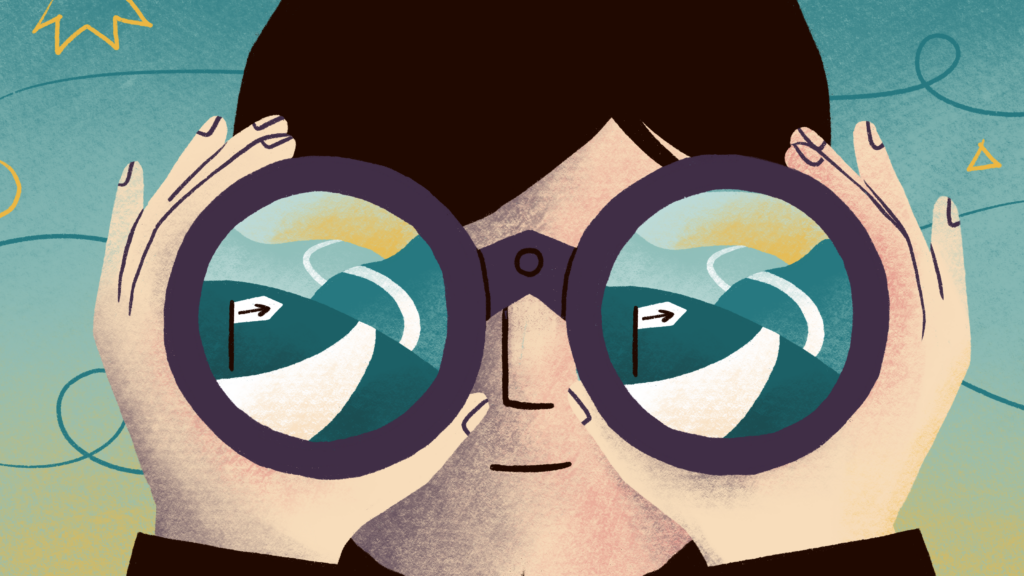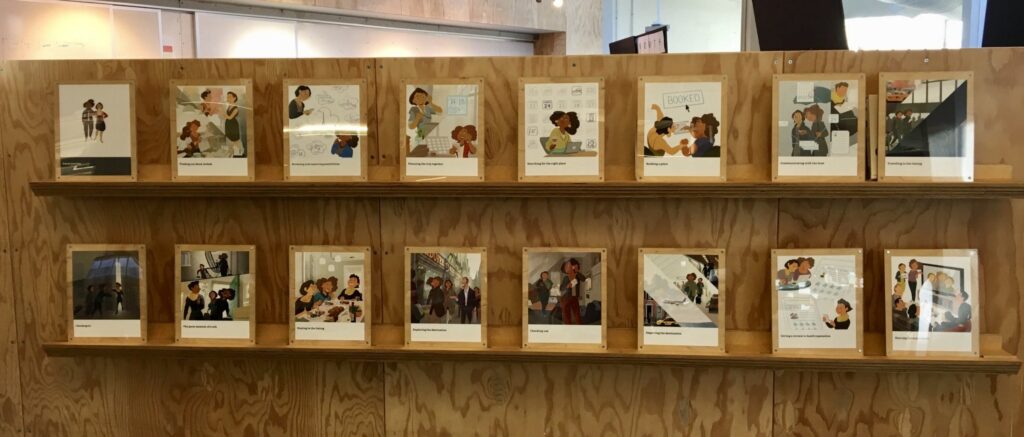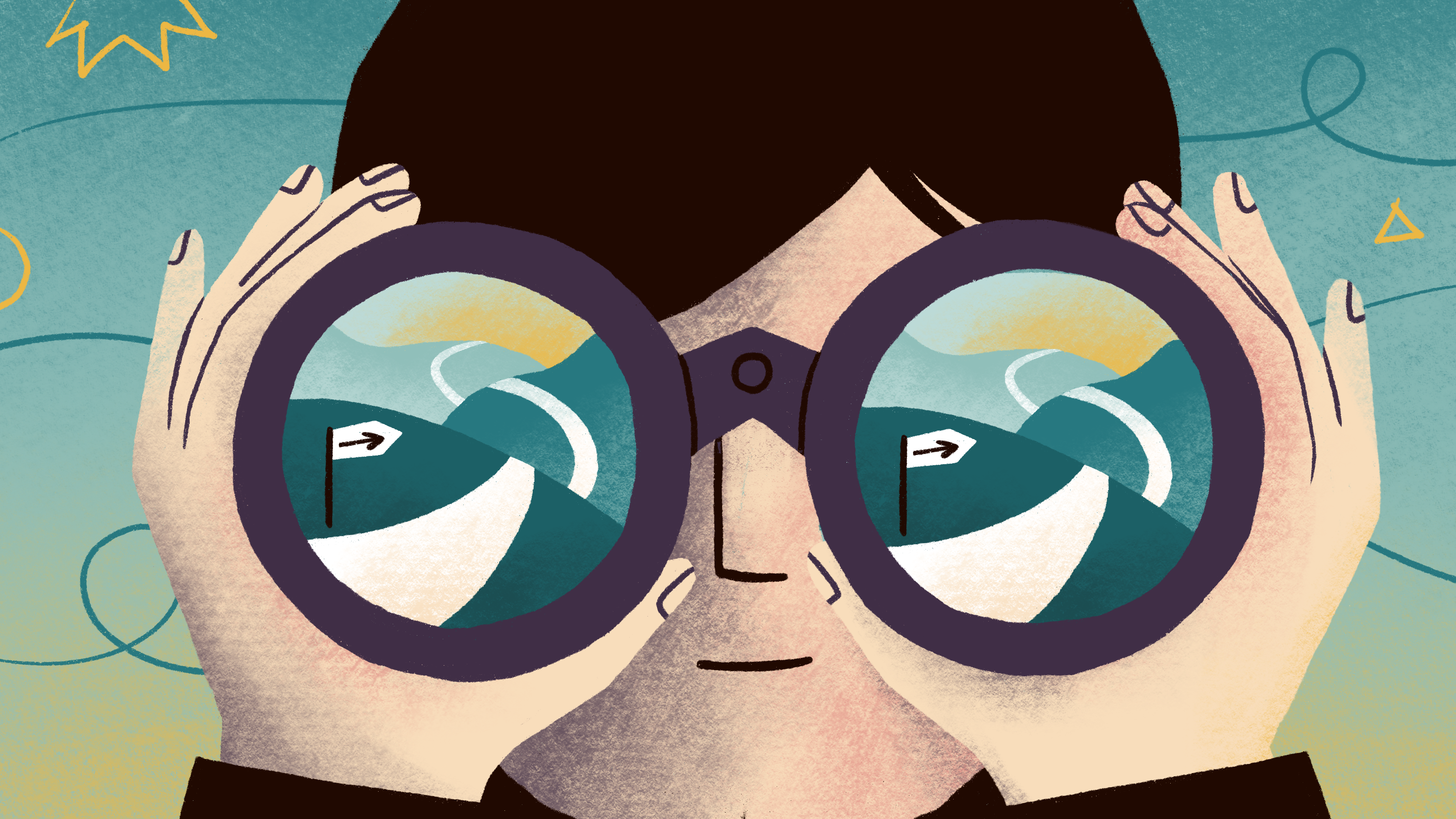
Illustration by Sasha Kolesnik
I visited Airbnb’s San Francisco office a few years back and saw this beautiful wall.

Airbnb’s storyboards were inspired by Walt Disney’s storyboards for his first feature film, Snow White and the Seven Dwarfs.
The wall's storyboards illustrate the key touchpoints of the host and guest journeys: everything from browsing to booking to interacting with your host, and enjoying your trip when that time finally comes. Each touchpoint is both physical and visual. It can be borrowed like a library book to inspire anyone working to improve it. You can imagine how the product started with accommodations and could extend their customer journey to include in-person and online activities.
Agile development should not mean “we don’t have a plan,” but that’s what it can feel like at times for cross-functional teams. I’ve written about the tough jobs that product managers have to define linear product roadmaps, while also iterating based on customer feedback. In addition, teams have to adapt to changing business priorities, and with cross-team dependencies, we might not have ownership over an entire product, much less an entire customer journey.
I'm here to tell you that product visions help teams orchestrate those experiences. They are visual and sometimes tactile plans for the future which give internal teams a directional sense of where they are headed based on a complete customer journey. Yes, the details change, but the customers who enjoy the products, the people who make that enjoyment happen, and the interactions they all have with your brand often remain constant.
At Beyond UX, I worked as a design strategy lead and we partnered with product leaders to communicate a product vision for employers, employees, and 3rd party developers. Our product vision wasn’t limited to a single screen, device, or app. We connected several feature teams by following a single employee through a wellness journey. We incorporated the employer’s needs of wanting to provide compelling healthcare benefits to their population. We responded to the 3rd party developers' needs of wanting wholesale distribution for their content. We were able to show how multiple journeys work together and can even strengthen each other.

A customer journey can be an integral part of a product vision.
“So how does this product effort fit into the bigger picture?” How can we have a more strategic impact.” These are questions I hear from designers I mentor. After completing all of your day-to-day work, try overdelivering by volunteering for extra opportunities like communicating your product, including your product’s vision. It may not be your role to lead your product manager and engineering counterparts, but you can use your design skills to ask questions, contribute ideas, and communicate a beautiful product vision for others to follow.

No comments.